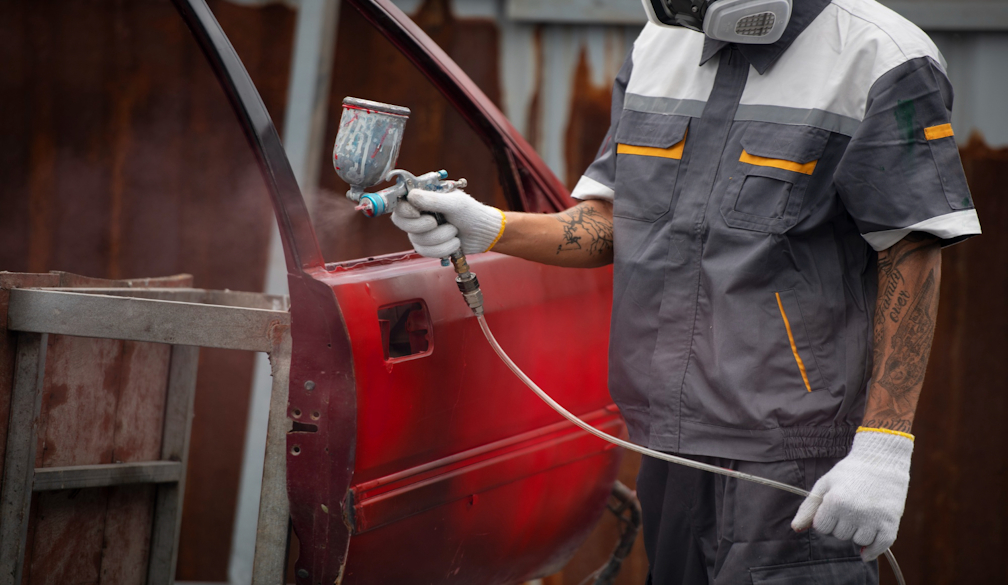How to use the spray gun

What is a Spray gun?
The best spray gun is a handheld device used for applying paint or other substances to various surfaces. It utilizes compressed air to atomize and propel the material in a fine spray, allowing for efficient and even coverage. Spray guns are commonly used in painting, automotive, and woodworking industries.
Buying Guide
When purchasing an electric spray gun, consider factors such as the type of gun (HVLP, airless, etc.), nozzle size, adjustability, and compatibility with your air compressor. Evaluate build quality, maintenance needs, and customer reviews. Choose a spray gun that suits your project requirements and offers good value for your budget.
Uses of Spray gun in UK
Painting: Paint Spray Gun is ideal for applying paint to walls, furniture, and various surfaces, providing even coverage and a smooth finish.
Automotive Work: Used for painting cars, motorcycles, and other vehicles, ensuring precise application and professional results.
Woodworking: Helps in staining, varnishing, and coating wood products, achieving uniform and efficient coverage.
Using a spray gun for the first time may seem intimidating, but with the right guidance, you can achieve professional-looking results on your painting projects. This easy-to-follow guide will walk you through the process step by step, ensuring a smooth and efficient application every time.
Prepare Your Workspace for Best electric spray gun
In US, before you begin using the best spray gun in Australia, ensure that your workspace is well-ventilated and free of any dust or debris that could affect the quality of the finish. Cover surrounding surfaces and objects with protective materials to prevent overspray and potential damage during the painting process.
Prepare the Paint:
Start by preparing the paint according to the manufacturer's instructions. Use the appropriate thinning agents or additives to achieve the desired consistency for the type of paint you are using. Strain the paint to remove any impurities or clumps that could clog the electric spray gun ensuring a smooth and consistent flow during application.
Set Up the Spray Gun:
Familiarize yourself with the components of the spray gun, including the nozzle, trigger, and fluid adjustment knob. Attach the paint container or cup securely to the gun and ensure all connections are tight and leak-free. Adjust the air pressure according to the recommended specifications for your specific paint and project requirements.
Practice Proper Technique:
Hold the spray gun at a consistent distance from the surface you are painting, typically between 6 and 8 inches. Maintain a perpendicular angle to the surface to ensure an even application and prevent drips or runs. Practice smooth and continuous strokes, overlapping each pass slightly for uniform coverage and a professional finish.
Test Spray on Scrap Material:
Before applying the paint to your intended surface, perform a test spray on a scrap material to check the consistency of the paint flow and the spray pattern. Make any necessary adjustments to the nozzle or air pressure settings to achieve the desired spray pattern and coverage before proceeding with the actual painting.
Begin Painting:
Once you are comfortable with the spray gun's operation and have tested the paint consistency, begin painting your surface using steady, controlled movements. Start from one corner and work your way across in smooth, overlapping strokes. Maintain a consistent speed and distance to ensure an even coat and prevent uneven application or pooling of the paint.
Practice Control and Precision:
Maintain control over the spray gun's trigger and fluid adjustment knob to regulate the amount of paint being released. Adjust the settings as needed to achieve the desired texture and thickness of the paint application. Focus on maintaining a steady hand and consistent pressure to ensure uniform coverage and avoid any uneven patches or streaks.
Allow for Proper Drying Time:
Once you have completed the painting process, allow the painted surface to dry according to the recommended drying time for the specific type of paint used. Avoid touching or disturbing the surface during this period to prevent any smudges or imperfections that could affect the final finish. Follow the manufacturer's guidelines for optimal drying conditions, such as temperature and humidity levels.
Clean the Spray Gun Thoroughly:
After finishing your project, clean the electric spray gun thoroughly to prevent any clogs or blockages that could affect future applications. Disassemble the spray gun and clean each component with the appropriate cleaning solution or solvent, ensuring that all paint residue is removed completely, as done with Paint Spray Gun. Reassemble the spray gun once it is thoroughly cleaned and dried, ready for future use.
Practice and Patience:
Using a spray gun efficiently takes practice and patience. Don't be discouraged if you don't achieve perfect results on your first try. With consistent practice and attention to detail, you can master the art of using a Best Spray Gun in Australia and achieve professional-quality finishes on your painting projects. Enjoy the process and embrace the learning curve as you become more proficient with each use.
Usage of Spray Guns in the UK and Australia
In both the UK and Australia, spray guns are commonly used in various industries such as automotive, construction, and manufacturing. They find applications in painting vehicles, furniture, machinery, and other surfaces, as well as in specialized sectors like marine and aerospace, where precision and efficiency are important.



